Occasionally people found large bones, but they usually thought they belonged to some animal, like an elephant or a giraffe. One piece of bone was thought to have been from a race of giant people. Dinosaur bones may even be responsible for the belief in dragons in ancient China. Then, in England, two gentlemen working separately discovered dinosaurs at about the same time.
The first was Dr. Gideon Mantell, a physician and amateur geologist. In 1822 his wife, Mary Ann Mantell, found some very large, unusual teeth in a pile of gravel. Mantell sent the teeth to other experts, but they dismissed them as belonging to a known animal. One paleontologist said they were from a rhinoceros. Mantell didn’t give up. He was sure the teeth were something special. He learned that the pile of gravel his wife had found the fossils in came from a nearby stone quarry. There he found more teeth and some bones. After much study, he determined that the bones and teeth came from a giant reptile. The teeth resembled those of the iguana lizard, but they were twenty times bigger!
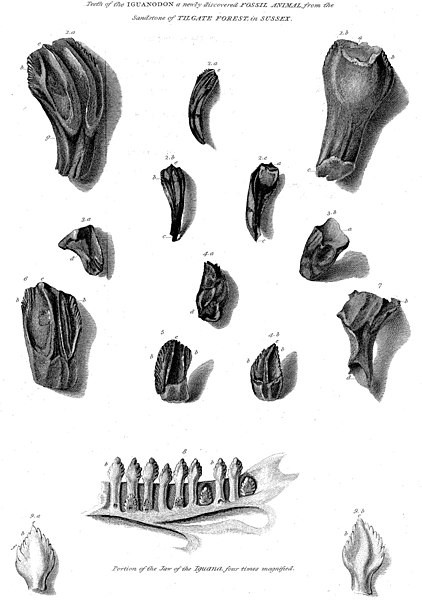
Gideon Mantell, Public domain, via Wikimedia Commons
In 1825, Mantell published a description of the creature, describing it as being at least 40 feet long. He named it Iguanodon (eh-GWA-nuh-don), Iguana from the iguana lizard and don, meaning tooth.
Meanwhile, in 1824, the Rev. William Buckland of Oxford came into the possession of some bones, including part of a jaw with teeth.
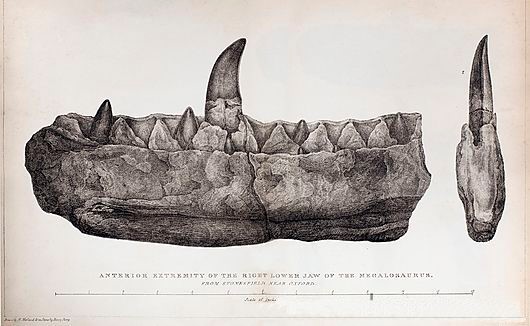
These teeth were clearly those of a giant reptile. Buckland named it Megalosaurus (MEH·guh·luh·sore·us), which means “great lizard.” He published a description of it that same year, which means it was the first dinosaur described scientifically. Mantell was still struggling with skeptics, and, as I said above, he didn’t publish until 1825. But, in 1833, Mantell discovered another giant reptile, Hylaeosaurus (hy-LEE-oh-sore-us). Hylaeosaurus was an armored, plant-eating dinosaur that grew about 16 feet long. So he discovered two of the first three dinosaurs.
A scientist named Sir Richard Owen was the one who put it all together. He studied the bones and teeth of all three creatures. He found them to share some characteristics, such as fused vertebrae at the base of the spine. But he found them quite unlike modern reptiles. He determined that these three animals deserved their own category. In 1842, he invented the name dinosaurs, which means “terrible lizards,” to describe them.
People were excited about these huge creatures and wanted to know what they looked like. Scientists tried to figure out how to put together the bones that had been found. But it was like trying to put together a jigsaw puzzle with only half the pieces. They thought Iguanodon looked something like a fat rhinoceros. In 1852, a sculptor named Waterhouse Hawkins made life-sized models of what scientists thought Iguanodon and Megalosaurus looked like.
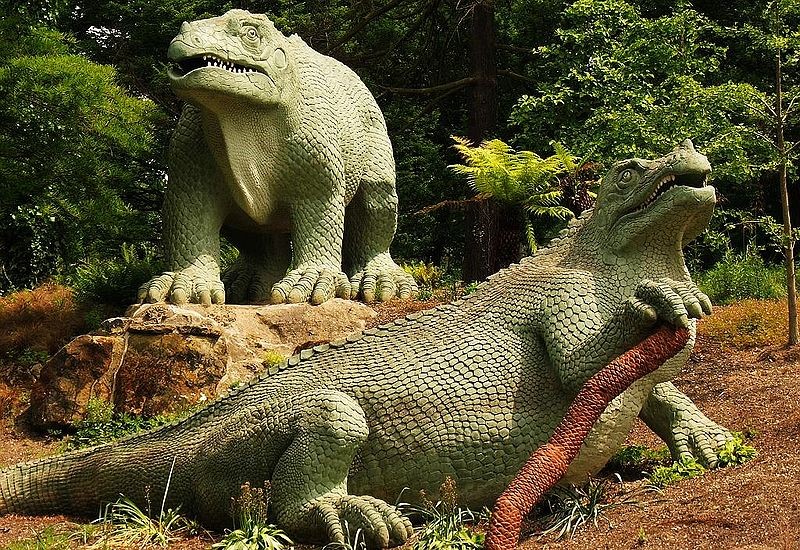
He and the scientists made a lot of mistakes. For example, when they found a spike from the Iguanodon, they put it on its nose. It was really the creature’s thumb. But they didn’t know they’d made so many mistakes. In fact, they were anxious to show the world their dinosaurs. When the model was half done, they decided to have a dinner party – in the dinosaur!

Many important scientists were invited. The seating area was a bit crowded, but everyone had a wonderful time. This was probably the only time in history that a dinner was inside a dinosaur without being the dinosaur’s dinner!
Since that time, we’ve learned so much more about dinosaurs, including more about how Iguanodon and Megalosaurus looked. They stood with all four legs directly under their bodies and didn’t drag their tails. They were active, not slow, sluggish creatures. But the excitement people felt then is the same excitement people still feel today.
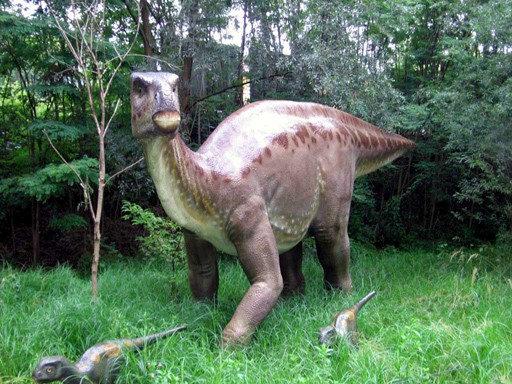

Sources (Click Me!)
Andrei, Mihai. “The Fearsome Megalosaurus: A Glimpse into the Jurassic World.” ZME Science. 9 August, 2023. https://www.zmescience.com/feature-post/natural-sciences/geology-and-paleontology/dinosaurs/megalosaurus/
Norman, David. The Illustrated Encyclopedia of Dinosaurs. Crescent Books, 1985.
Osterloff, Emily. “Dinosauria: How the ‘terrible lizards’ got their name.” London Natural History Museum. https://www.nhm.ac.uk/discover/how-dinosaurs-got-their-name.html
Walker, Bob. “Gideon Mantell: The Forgotten Man Who Discovered Dinosaurs.” The Guardian. 2020. https://www.theguardian.com/science/2019/feb/03/gideon-mantell-play-fight-over-first-dinosaur
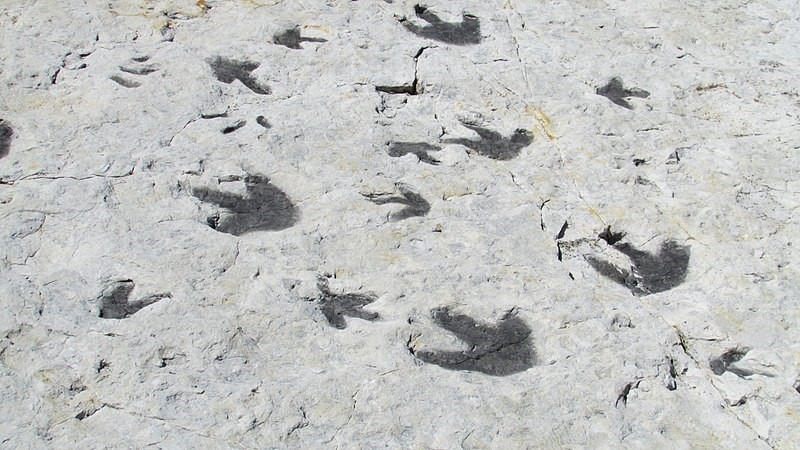
Very interesting article!
LikeLike
Huh… I didn’t know about the horn actually being the toe… What an idea.
LikeLike